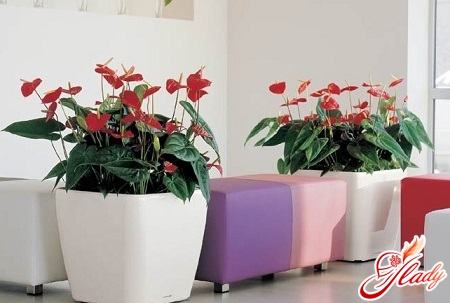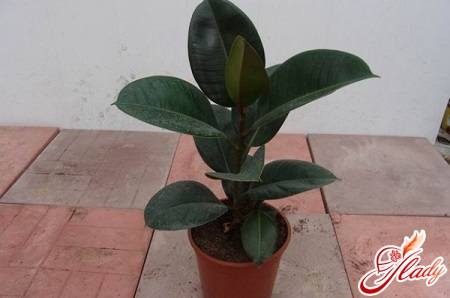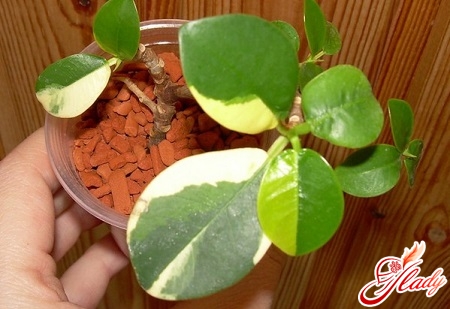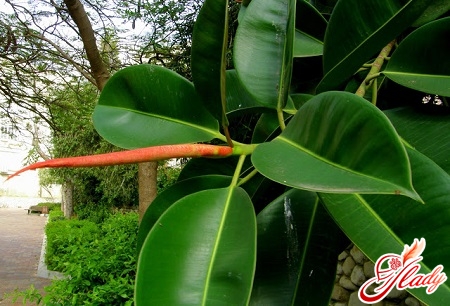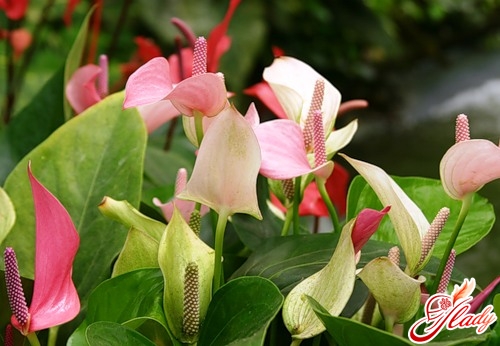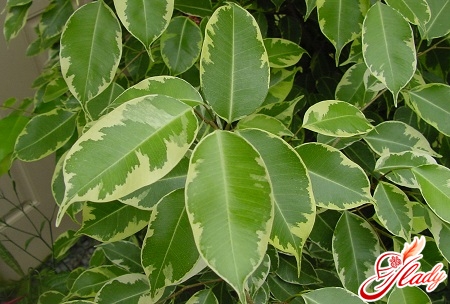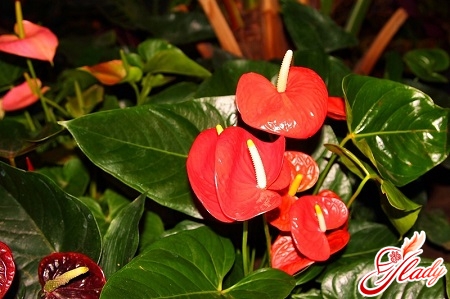 Among other houseplants, anthurium is advantageousis distinguished by inflorescences of unusual shape and bright wide leaves. Most housewives-florists prefer to grow this plant with flowers. Although the decorative leafy anthurium with large fancy leaves is a beautiful addition to any home flower collection. If you have just decided to have this decorative exotic flower at home, you need to familiarize yourself with the rules of caring for it and strictly follow them. Today we will tell you in detail how to properly transplant this plant. You probably already know that anthurium requires special care. But if you adhere to certain rules, then caring for this plant will not cause any special trouble. On the contrary, it will please its owner and even become a source of pride for her.
Among other houseplants, anthurium is advantageousis distinguished by inflorescences of unusual shape and bright wide leaves. Most housewives-florists prefer to grow this plant with flowers. Although the decorative leafy anthurium with large fancy leaves is a beautiful addition to any home flower collection. If you have just decided to have this decorative exotic flower at home, you need to familiarize yourself with the rules of caring for it and strictly follow them. Today we will tell you in detail how to properly transplant this plant. You probably already know that anthurium requires special care. But if you adhere to certain rules, then caring for this plant will not cause any special trouble. On the contrary, it will please its owner and even become a source of pride for her.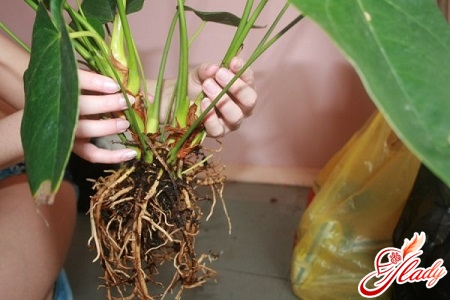
Basic Transplant Rules
Here's what you need to know if you're planning to repot your anthurium:
First of all, you need to remember that transplantation isThis is a rather drastic intervention in the life of any plant. This also applies to anthurium. It is best to transplant during the period when the plant accumulates the maximum reserve of vital forces and its inflorescence has not yet opened to its full strength. At this time, the plant is ready to withstand all sorts of stressful situations associated with transplantation. For delicate anthurium, this time comes in the spring-summer period.
At the age of up to four years, plants needannual transplant, which can be conducted from March to August. During each transplant, the pot should be changed to a larger volume. Do not forget to increase the height of the drainage layer.
Anturium from four years of age and older should be replaced less often. It will be enough for him to transplant once every two to three years, with the replacement of the old soil with a suitable new nutrient soil.
Anthurium has a very fragile root system and tender leaves, so when transplanting a plant, careful and careful handling is required.
It is recommended to water the plant well before the transplant. Then, with all the precautions, remove the flower from the pot and clean its root system from the old substrate.
Last year's soil may stick to the rootsplants, in this case, an easy tapping on the adhered substrate is allowed. Then we need to thoroughly examine the entire root system of the anthurium and remove the dead or decayed roots, without damaging the healthy roots. After this place cut must be sprinkled with a mixture of charcoal.
In case the anthurium has been removed most of the root system, then for the transplant he needs a smaller pot (compared to the previous one).
Drainage for transplantation should be put enoughthick layer, it is recommended to lay it on about one third of the pot. But at the same time the ground does not need to be rammed, thus ensuring easier access of air to the roots of the plant. Quality drainage ensures that water stagnation in the root system is avoided.
In the soil experts advise adding duringtransplant pieces of charcoal. And every mistress of anthurium must remember that this plant painfully tolerates alkali. Especially it is not necessary to forget during watering and transplantation. Therefore, the soil that is prepared for transplanting the plant must be acidified. Acidic substrates are effective for acidification, for example, the addition of a small amount of peat, Christmas-tree needles, alder and coniferous sawdust.
It is also good to buy special soil mixtures made especially for plants of the family of aroids, to which the anthurium belongs.
In a new pot, intended for transplant,After laying the drainage layer, pour a little prepared soil. Then place the flower and gently fall asleep with the remaining soil, while not reaching the edges of the pot about one centimeter.
By covering the plant's root system with soil,it is necessary to carefully monitor the formation of air pockets between the intertwined roots. These air pockets, where the soil does not reach, should be filled in, for example, with a stick. The stick should be used to push the soil to the roots and at the same time lightly tap the pot on the table surface. That is, carefully and evenly tamp the soil without using force. When finished, lightly press the soil around the anthurium without applying force.
During the next transplantation of the anthurium, the trunk of the plant should be planted slightly lower in the ground, in comparison with the previous year.
In wild anthuriums, growing in open nature,activity in growth shows air roots. They, reaching the substrate, begin to take root on it and strongly branch. At home anthuriums, such growth is limited, so the roots that will appear as the plant grows, it is necessary to cover with moss and constantly moisturize them, otherwise they will begin to dry out.
On hot days, the flower should not be transplanted. During the transplant, the plant should be well watered and sprinkled, but in the next two weeks it should be strictly limited to watering.
After transplanting, place the pot with the anthuriumin a fairly bright place, but at the same time it is necessary to ensure that the sun's rays do not reach it. The plant has already been subjected to a "shake-up", so the first weeks after transplantation it should be allowed to recover from the stress, it should not be moved once again or disturbed in general. It is better to let the anthurium get used to the new pot in a calm environment, and the root system will strengthen well in another, more nutritious environment.
Some recommendations for replanting anthurium:
- As advised by the hostess, for effective growth and flowering state of anthurium it is better to use high pots than low and wide ones.
- Pot for transplant should be chosen according to the size of the root system. In a spacious large pot, you can easily pour the roots of anthurium, which will later begin to rot.
- Pots should be plastic, notceramic. The temperature of the soil in plastic pots is about the same as the air temperature in the room. Whereas in ceramic pots, the soil has a higher temperature than the environment, and under such conditions, the roots of the anthurium begin to decay.
- Determine whether it is time to transplant Anthurium,in the following simple way: remove the flower from the pot, and if its roots are closely bounded by the earth com (and sometimes even so that the earth is practically invisible), then the plant needs an urgent transplant.
- If the roots break through the holes in the bottom of the pot, then this too must be considered a signal for an emergency anthurium transplant.
- If visible signs of withering anthurium are visible,then this means that the flower suffers without finding the necessary in the emaciated earth. Transplantation into a new soil with nutrients will be a salvation for the plant.
- Periodic transplantation is also useful becauseThe structure and composition of the soil in which the flower is located gradually deteriorate. The soil accumulates an excess of mineral substances, the capillaries in the soil are destroyed, which conduct air to the roots of the plant. The main feature of this is a white coating on the top of the soil, which can easily be seen.
Of course, anthurium, like some othersindoor plants require strict adherence to the temperature regime, maintaining a certain level of air humidity, careful care and periodic transplants. But you should not consider this flower too capricious, and even more so, you should not be afraid to buy this exotic plant. The most important thing is to remember the basic requirements for caring for anthurium, and strictly follow them. All these rules are quite simple, and even a novice plant lover can remember and follow them. In response to such care, the grateful anthurium flower will delight you with flowering every year, and very soon it will cease to seem capricious and wayward to you.
Comments
comments
 Among other houseplants, anthurium is advantageousis distinguished by inflorescences of unusual shape and bright wide leaves. Most housewives-florists prefer to grow this plant with flowers. Although the decorative leafy anthurium with large fancy leaves is a beautiful addition to any home flower collection. If you have just decided to have this decorative exotic flower at home, you need to familiarize yourself with the rules of caring for it and strictly follow them. Today we will tell you in detail how to properly transplant this plant. You probably already know that anthurium requires special care. But if you adhere to certain rules, then caring for this plant will not cause any special trouble. On the contrary, it will please its owner and even become a source of pride for her.
Among other houseplants, anthurium is advantageousis distinguished by inflorescences of unusual shape and bright wide leaves. Most housewives-florists prefer to grow this plant with flowers. Although the decorative leafy anthurium with large fancy leaves is a beautiful addition to any home flower collection. If you have just decided to have this decorative exotic flower at home, you need to familiarize yourself with the rules of caring for it and strictly follow them. Today we will tell you in detail how to properly transplant this plant. You probably already know that anthurium requires special care. But if you adhere to certain rules, then caring for this plant will not cause any special trouble. On the contrary, it will please its owner and even become a source of pride for her.




